Abstract
Aminoglycosides and carbenicillin are frequently co-administered to patients with serious gram-negative infections. Aminoglycosides are inactivated by carbenicillin in vitro, and a loss of antibacterial activity of both antibiotics results. Although these interactions are presumed to occur in vivo, previous studies have not used assay methodology that can distinguish inactivation occurring prior to and during microbiological assay from inactivation in vivo. To address this problem, we gave seven bilaterally nephrectomized mongrel dogs doses designed to achieve simultaneous therapeutic serum concentrations of aminoglycosides and carbenicillin. Serum samples were tested by radioimmunoassay on three occasions: immediately, to determine in vivo interactions, and at 24 h and 1 week to assess the time course of in vitro inactivation. In comparison with immediate radioimmunoassay, gentamicin and tobramycin concentrations decreased by 39 and 53%, respectively, when assayed at 24 h (P < 0.05) and by 75 and 82% when assayed at 7 days (P < 0.001). In contrast, amikacin concentrations were reduced by only 9 and 30% at 24 h and 7 days. Tobramycin concentrations were also determined by immediate microbiological assay and were found to be similar to those in samples stored for 24 h before radioimmunoassay. Immediate radioimmunoassay demonstrated that carbenicillin reduced in vivo serum half-lives of gentamicin and tobramycin by 40% (P < 0.05). The half-life of amikacin in vivo was not significantly altered. In the presence of carbenicillin, amikacin was the most stable aminoglycoside both in vivo and in vitro, and it is the aminoglycoside of choice in patients with renal failure who require this combination.
Full text
PDF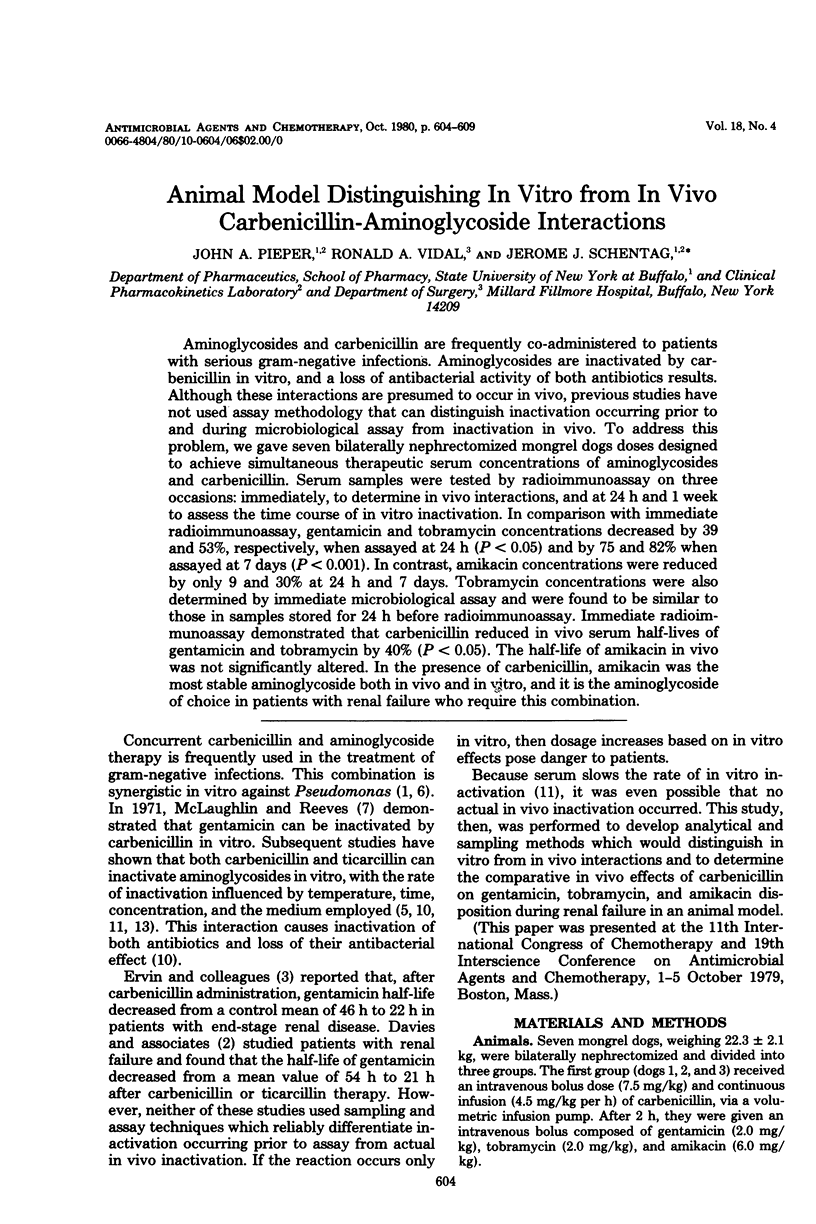
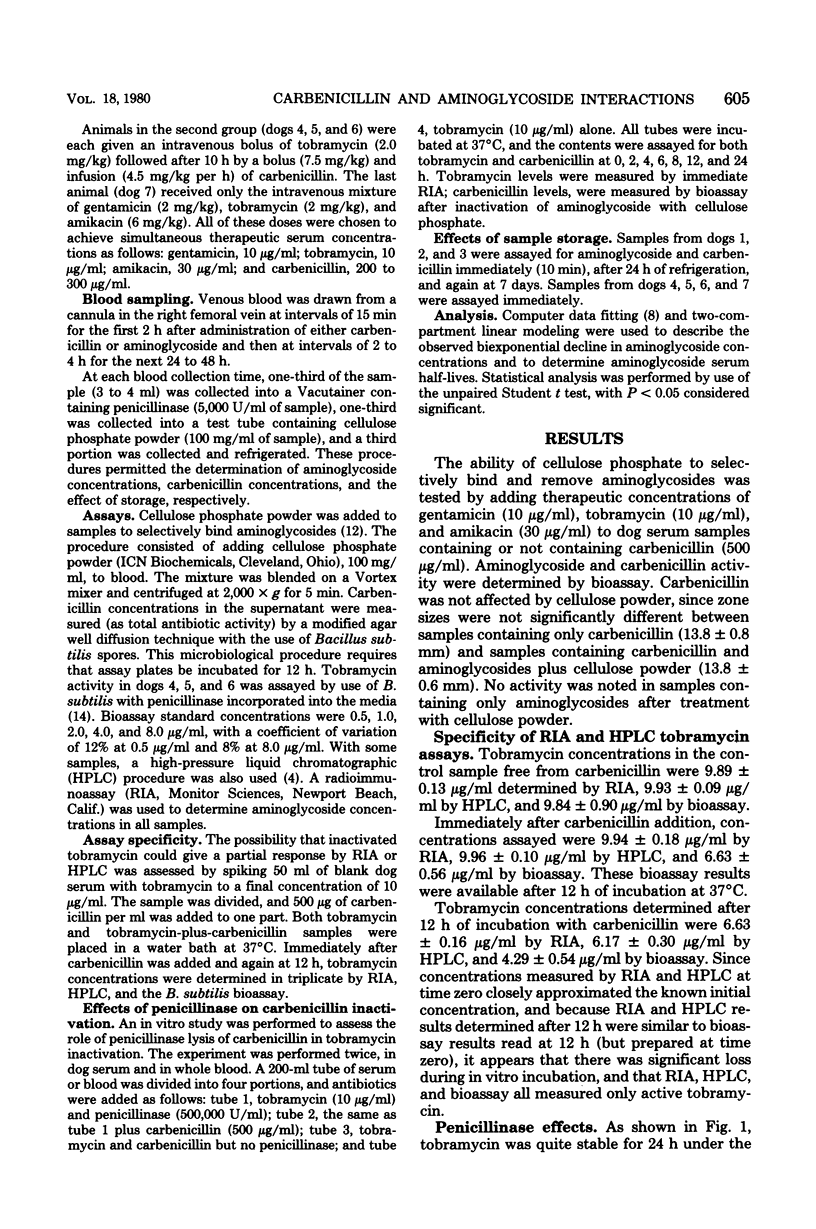
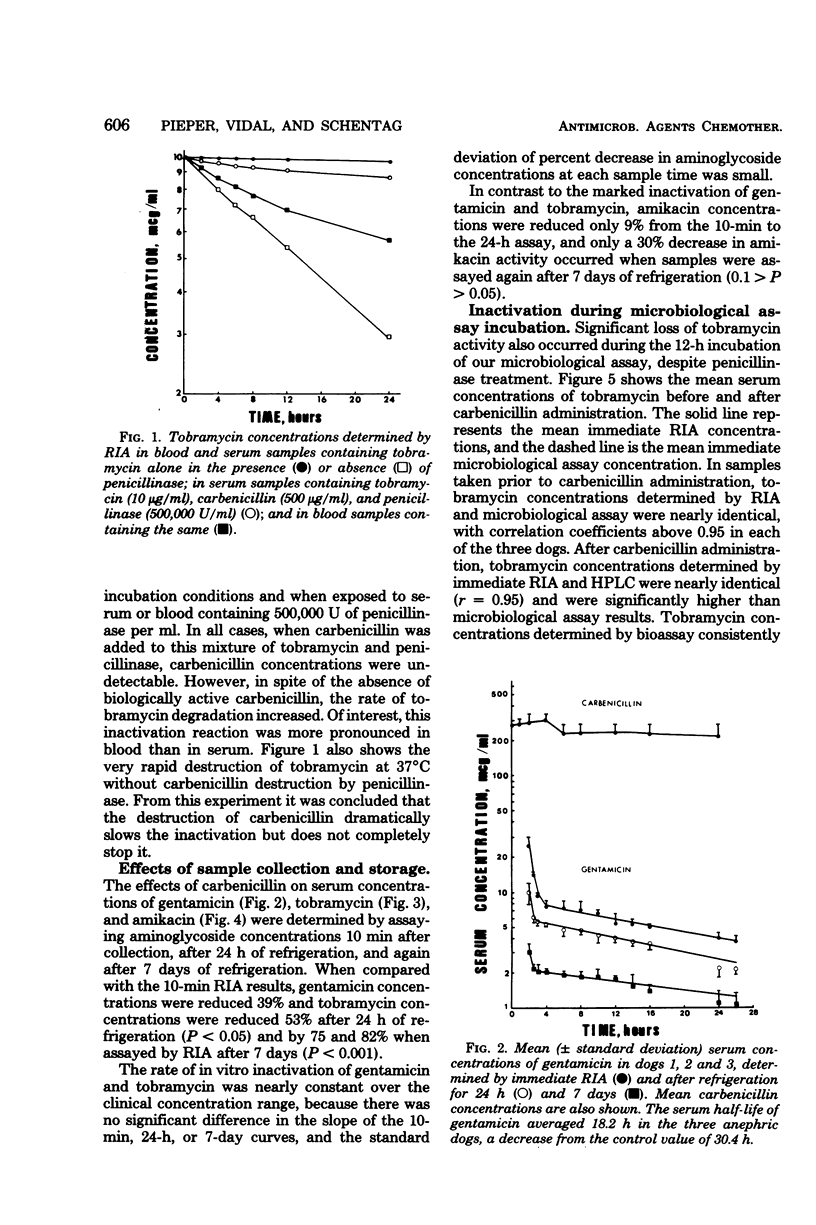
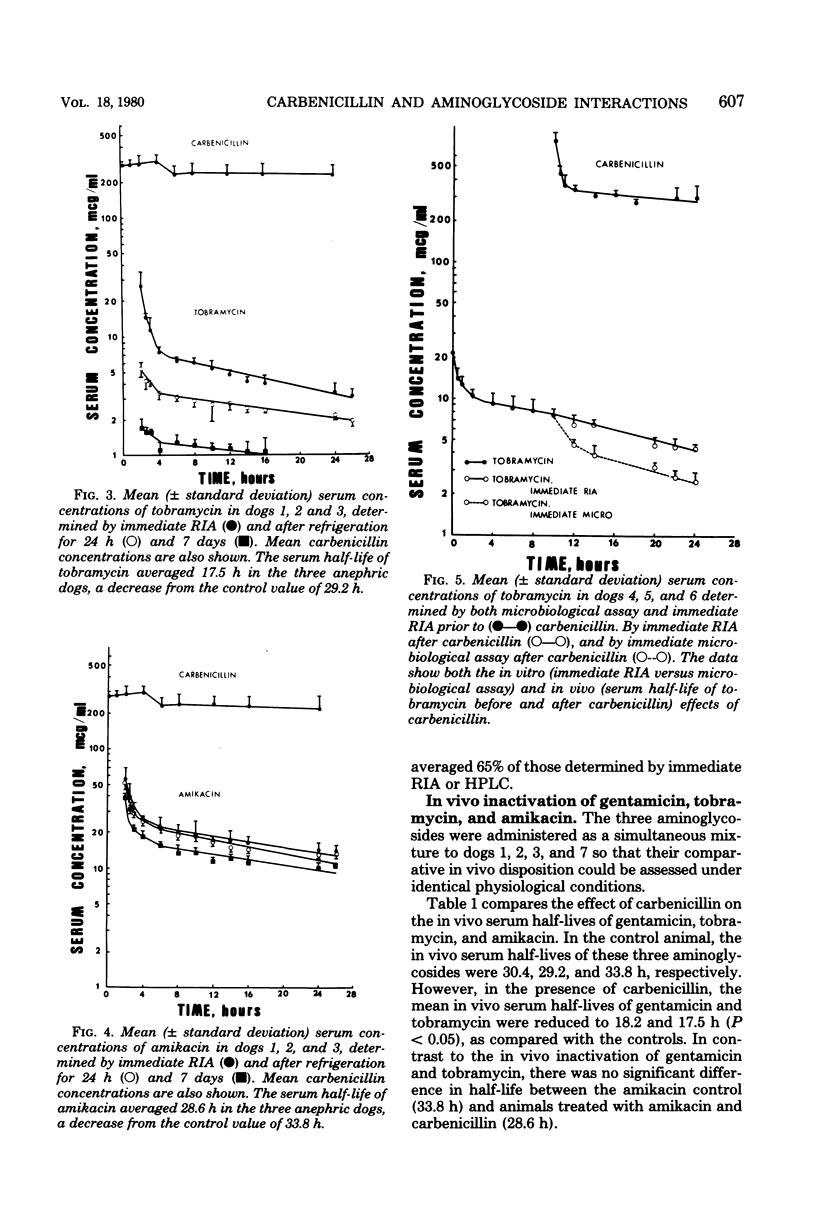
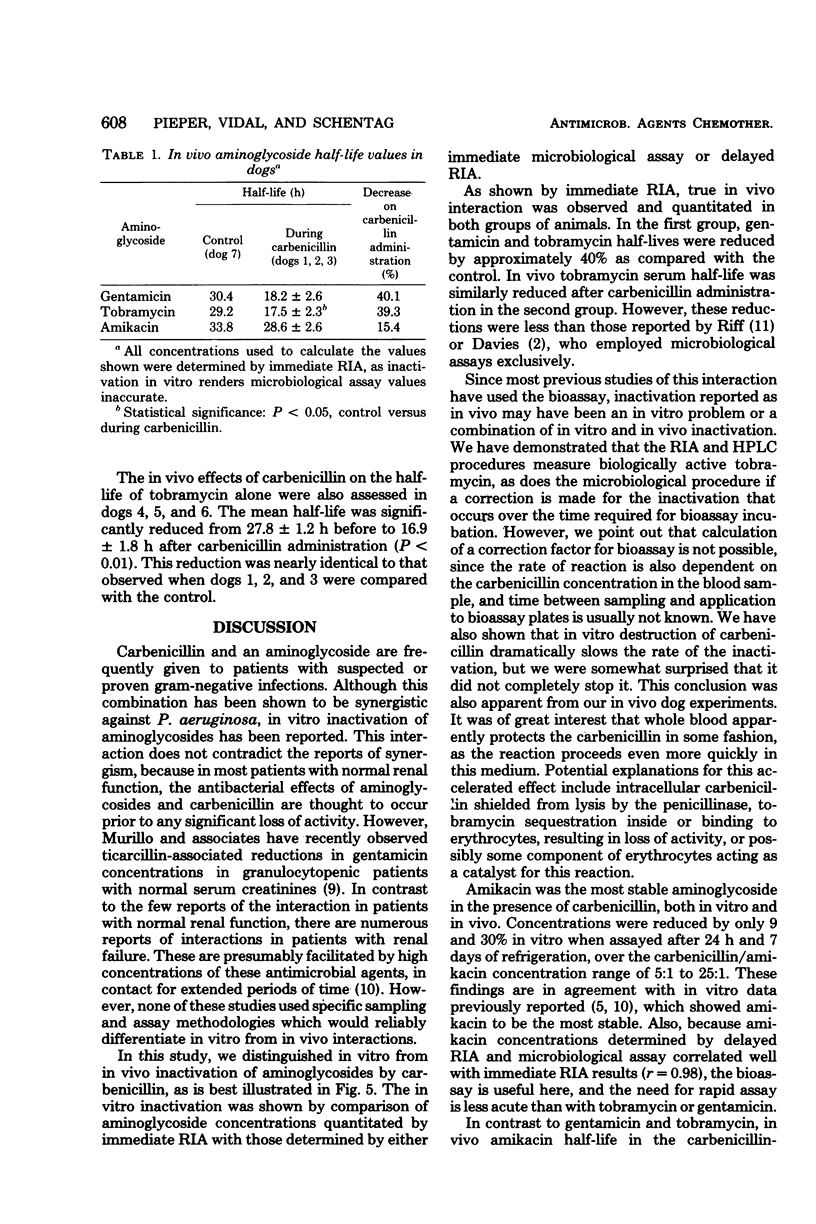
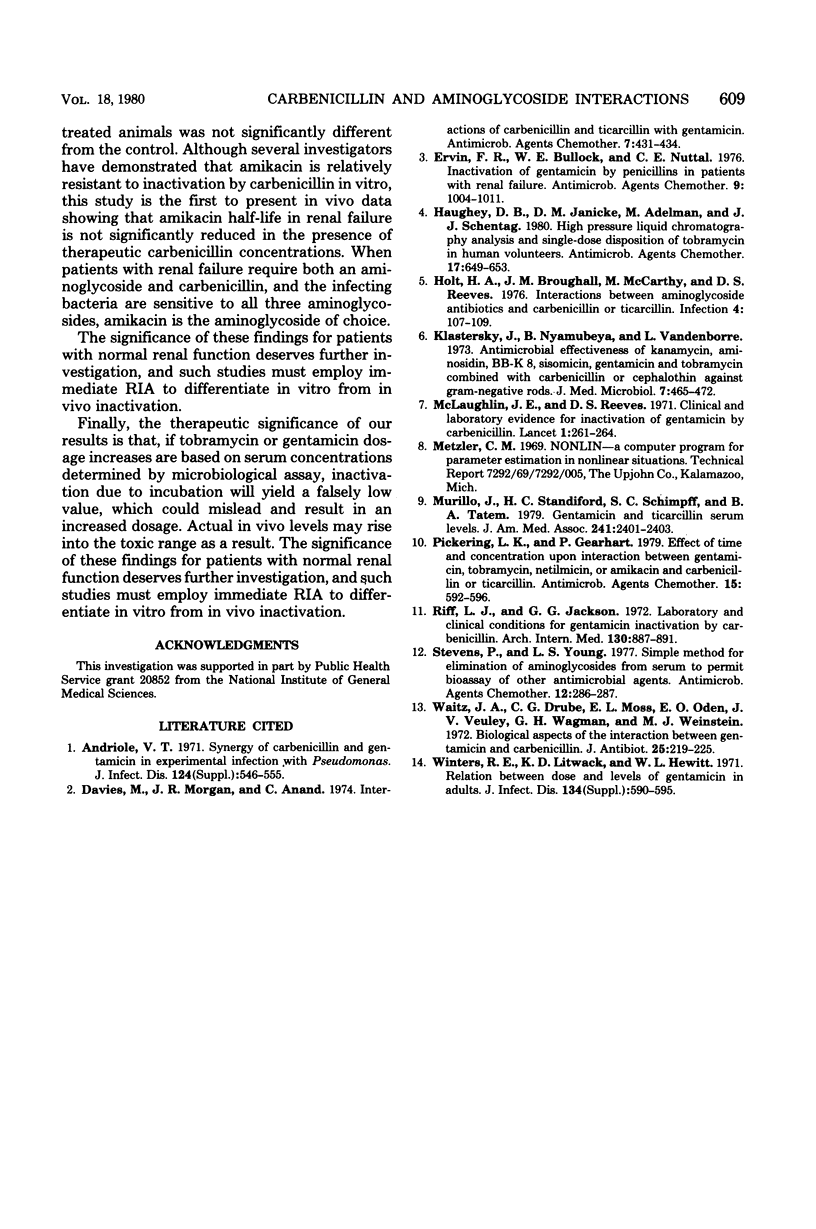
Selected References
These references are in PubMed. This may not be the complete list of references from this article.
- Davies M., Morgan J. R., Anand C. Interactions of carbenicillin and ticarcillin with gentamicin. Antimicrob Agents Chemother. 1975 Apr;7(4):431–434. doi: 10.1128/aac.7.4.431. [DOI] [PMC free article] [PubMed] [Google Scholar]
- Ervin F. R., Bullock W. E., Jr, Nuttall C. E. Inactivation of gentamicin by penicillins in patients with renal failure. Antimicrob Agents Chemother. 1976 Jun;9(6):1004–1011. doi: 10.1128/aac.9.6.1004. [DOI] [PMC free article] [PubMed] [Google Scholar]
- Haughey D. B., Janicke D. M., Adelman M., Schentag J. J. High-pressure liquid chromatography analysis and single-dose disposition of tobramycin in human volunteers. Antimicrob Agents Chemother. 1980 Apr;17(4):649–653. doi: 10.1128/aac.17.4.649. [DOI] [PMC free article] [PubMed] [Google Scholar]
- Holt H. A., Broughall J. M., McCarthy M., Reeves D. S. Interactions between aminoglycoside antibiotics and carbenicillin or ticarillin. Infection. 1976;4(2):107–109. doi: 10.1007/BF01638726. [DOI] [PubMed] [Google Scholar]
- Klastersky J., Nyamubeya B., Vandenborre L. Antimicrobial effectiveness ofkanamycin, aminosidin, BB-K8, sisomicin, gentamicin and tobramycin combined with carbenicillin or cephalothin against gram-negative rods. J Med Microbiol. 1974 Nov;7(4):465–472. doi: 10.1099/00222615-7-4-465. [DOI] [PubMed] [Google Scholar]
- McLaughlin J. E., Reeves D. S. Clinical and laboratory evidence for inactivation of gentamicin by carbenicillin. Lancet. 1971 Feb 6;1(7693):261–264. doi: 10.1016/s0140-6736(71)91001-4. [DOI] [PubMed] [Google Scholar]
- Murillo J., Standiford H. C., Schimpff S. C., Tatem B. A. Gentamicin and ticarcillin serum levels. JAMA. 1979 Jun 1;241(22):2401–2403. [PubMed] [Google Scholar]
- Pickering L. K., Gearhart P. Effect of time and concentration upon interaction between gentamicin, tobramycin, Netilmicin, or amikacin and carbenicillin or ticarcillin. Antimicrob Agents Chemother. 1979 Apr;15(4):592–596. doi: 10.1128/aac.15.4.592. [DOI] [PMC free article] [PubMed] [Google Scholar]
- Riff L. J., Jackson G. G. Laboratory and clinical conditions for gentamicin inactivation by carbenicillin. Arch Intern Med. 1972 Dec;130(6):887–891. [PubMed] [Google Scholar]
- Stevens P., Young L. S. Simple method for elimination of aminoglycosides from serum to permit bioassay of other antimicrobial agents. Antimicrob Agents Chemother. 1977 Aug;12(2):286–287. doi: 10.1128/aac.12.2.286. [DOI] [PMC free article] [PubMed] [Google Scholar]
- Waitz J. A., Drube C. G., Moss E. L., Jr, Oden E. M., Bailey J. V. Biological aspects of the interaction between gentamicin and carbenicillin. J Antibiot (Tokyo) 1972 Apr;25(4):219–225. doi: 10.7164/antibiotics.25.219. [DOI] [PubMed] [Google Scholar]


